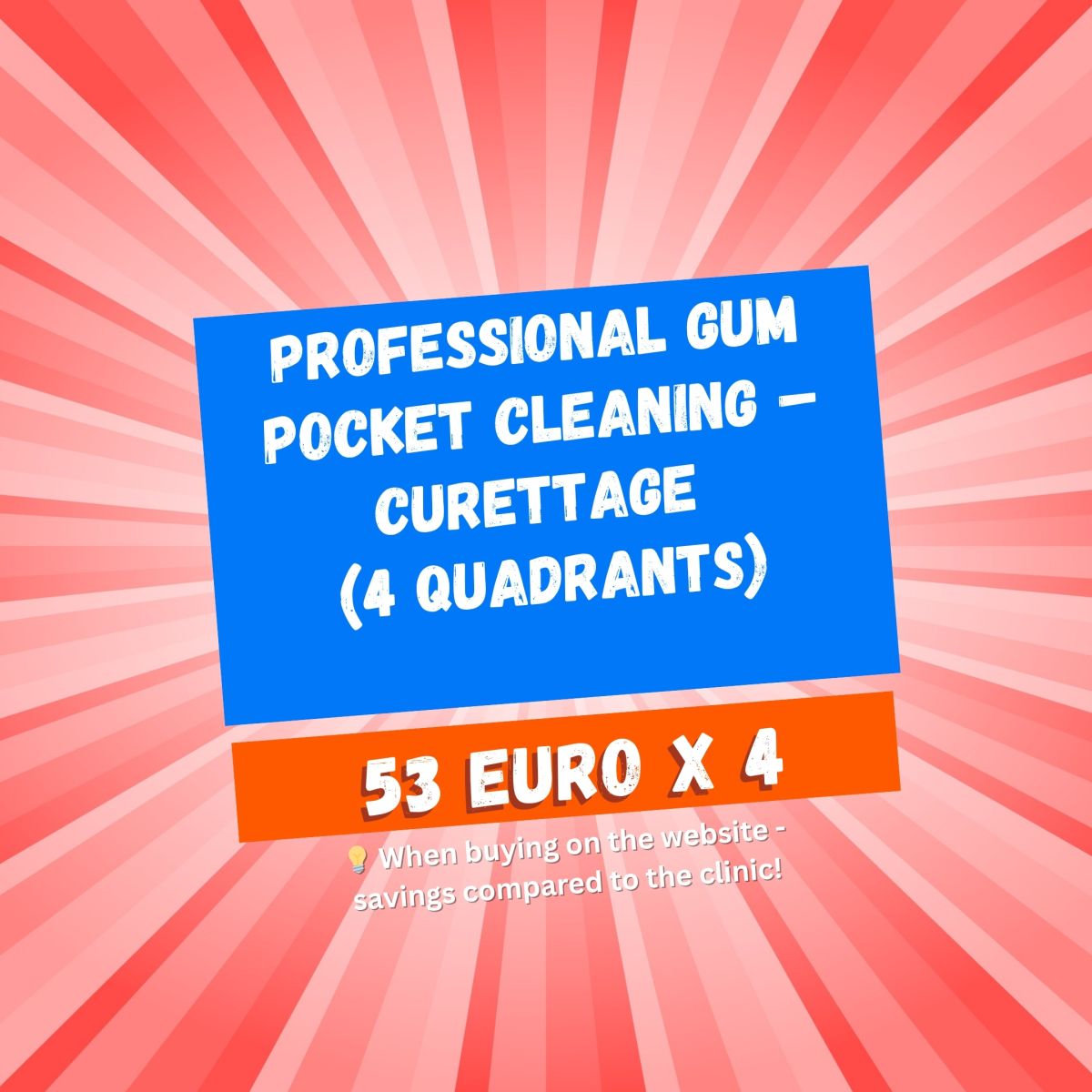
Curettage is a deep professional cleaning of the gum pockets, performed in cases of gum inflammation and subgingival tartar buildup. This procedure is especially important for patients with gingivitis or periodontitis, as it helps prevent the progression of gum disease and supports the long-term health of the teeth.
Normally, there is a small space between the tooth and the gum, called a gingival sulcus or pocket. When the gums become inflamed, the pocket deepens, allowing plaque, tartar, and bacteria to accumulate. This can lead to bone loss and, eventually, tooth mobility or even tooth loss if not treated in time.
How is the procedure performed?
- The dentist examines your gums and measures the depth of the pockets.
- Local anesthesia is administered, if necessary, to ensure a painless procedure.
- Special instruments called curettes are used to remove subgingival tartar and infected tissue.
- The root surfaces are smoothed (root planing) to reduce future plaque accumulation.
- The gums are disinfected, and post-treatment care instructions are provided.
Benefits of gum curettage:
- Elimination of infection and bacterial buildup.
- Reduced gum bleeding and discomfort.
- Decreased depth of gum pockets.
- Prevention of further bone loss.
- Improved gum health and tooth stability.
Types of curettage:
Closed (non-surgical) curettage – performed without cutting the gum, suitable for pockets up to 5 mm.
Open (surgical) curettage – used for pockets deeper than 5 mm, involving a small gum incision for better access.
After the procedure, patients may experience slight sensitivity or discomfort, which typically subsides within a few days. Following your dentist’s aftercare instructions and scheduling professional cleanings every 6 months is essential to maintain gum health.
